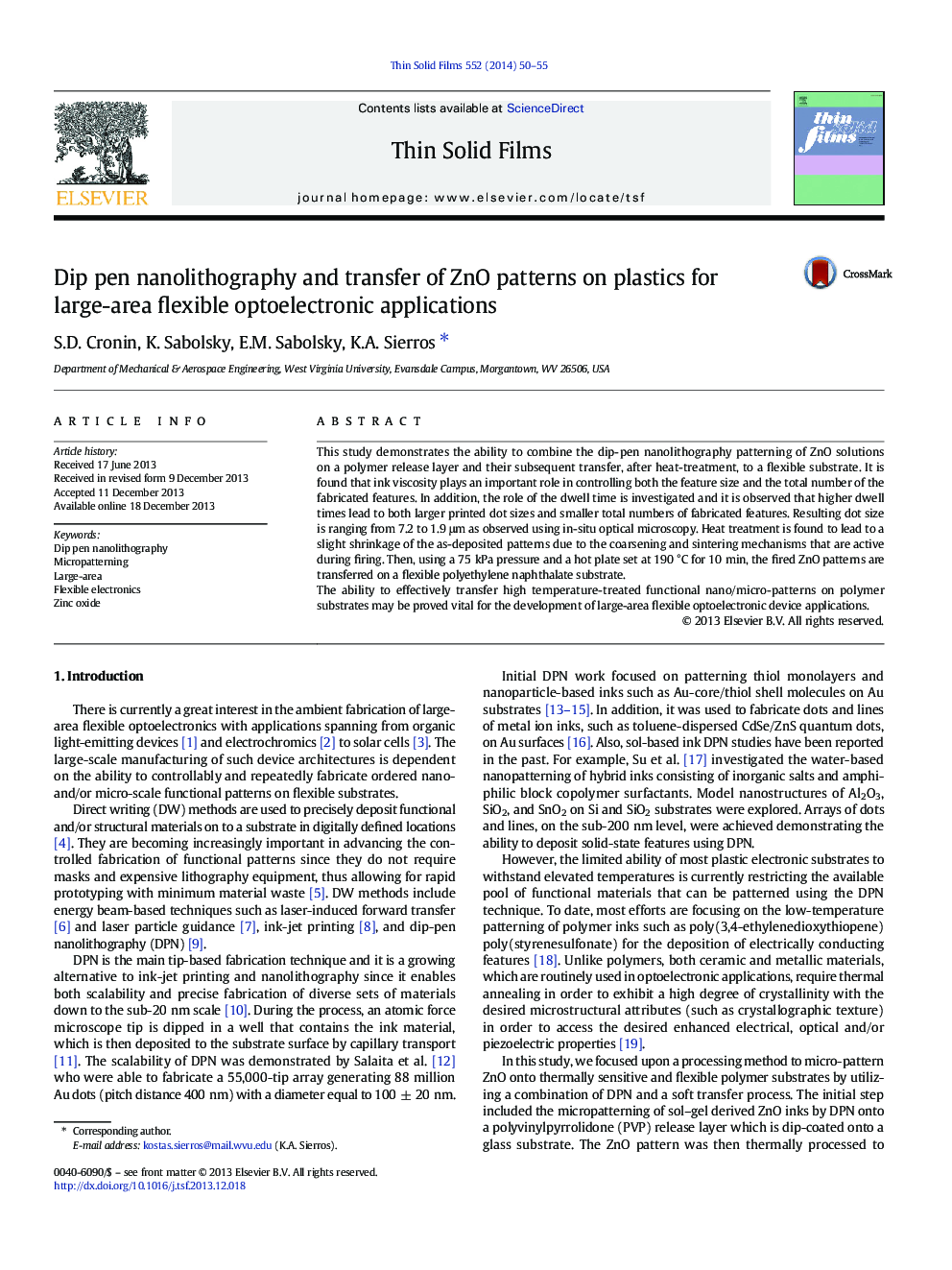| Article ID | Journal | Published Year | Pages | File Type |
|---|---|---|---|---|
| 1665683 | Thin Solid Films | 2014 | 6 Pages |
•Zinc oxide (ZnO) micropatterns are deposited through dip-pen nanolithography.•Transfer of ZnO micropatterns to a polymer substrate was performed.•The role of viscosity and dwell time on feature size is examined.
This study demonstrates the ability to combine the dip-pen nanolithography patterning of ZnO solutions on a polymer release layer and their subsequent transfer, after heat-treatment, to a flexible substrate. It is found that ink viscosity plays an important role in controlling both the feature size and the total number of the fabricated features. In addition, the role of the dwell time is investigated and it is observed that higher dwell times lead to both larger printed dot sizes and smaller total numbers of fabricated features. Resulting dot size is ranging from 7.2 to 1.9 μm as observed using in-situ optical microscopy. Heat treatment is found to lead to a slight shrinkage of the as-deposited patterns due to the coarsening and sintering mechanisms that are active during firing. Then, using a 75 kPa pressure and a hot plate set at 190 °C for 10 min, the fired ZnO patterns are transferred on a flexible polyethylene naphthalate substrate.The ability to effectively transfer high temperature-treated functional nano/micro-patterns on polymer substrates may be proved vital for the development of large-area flexible optoelectronic device applications.
